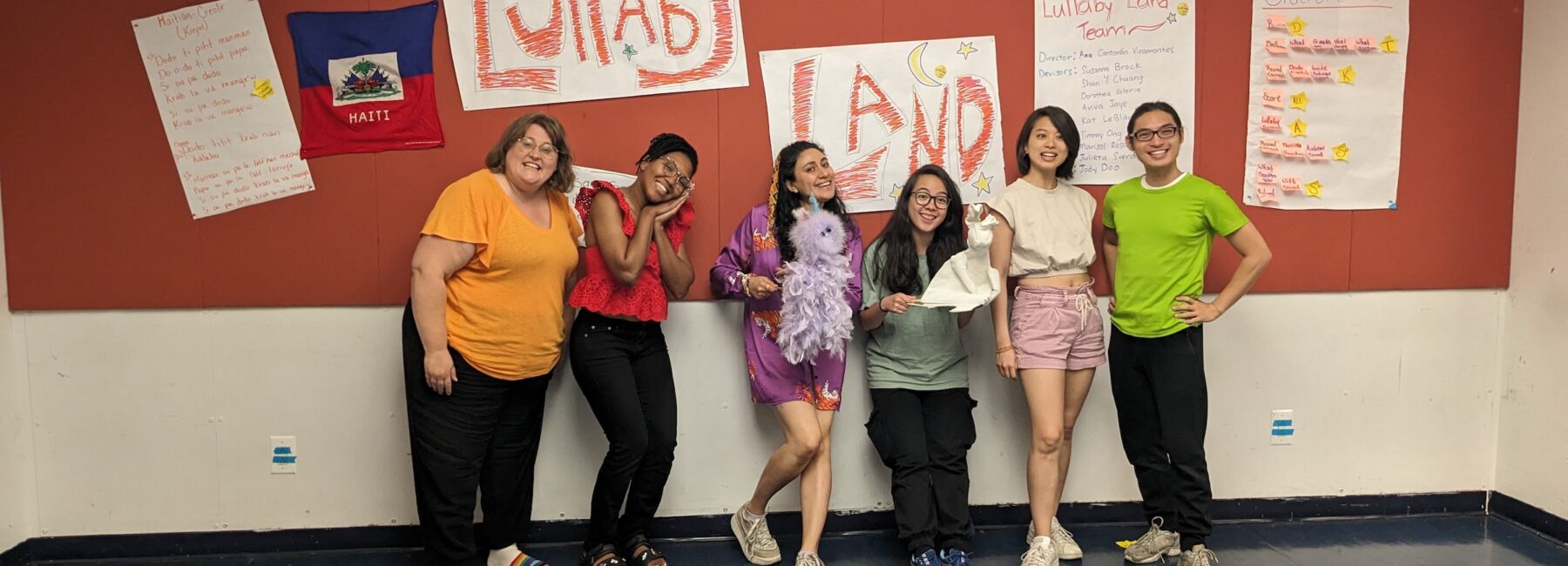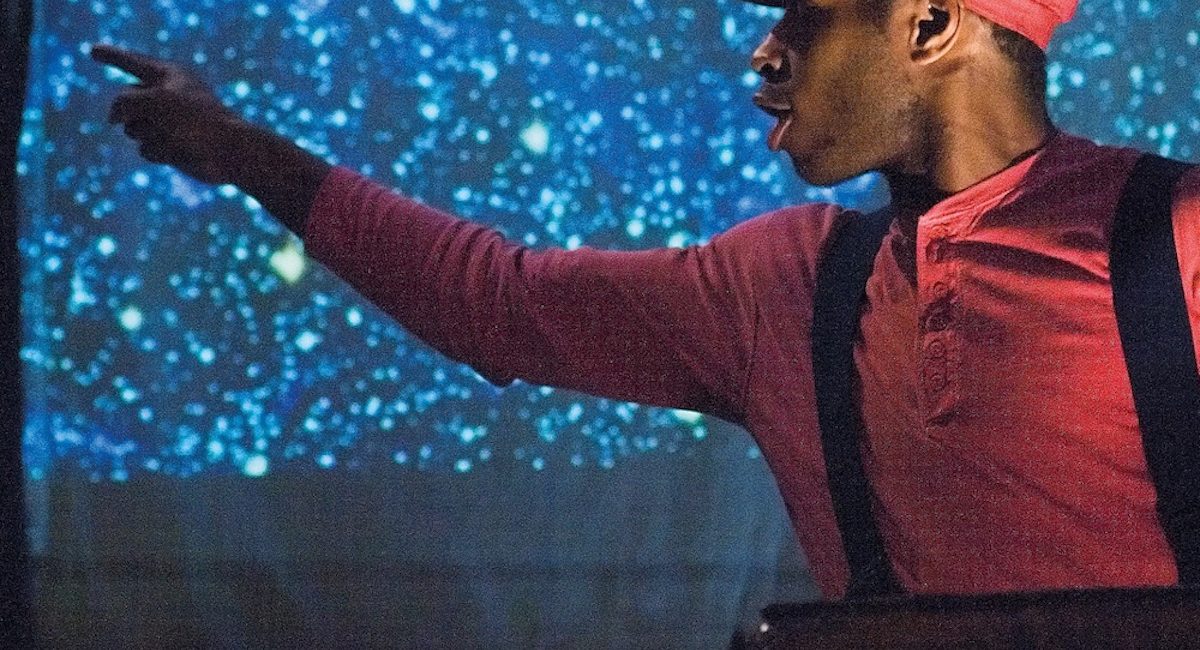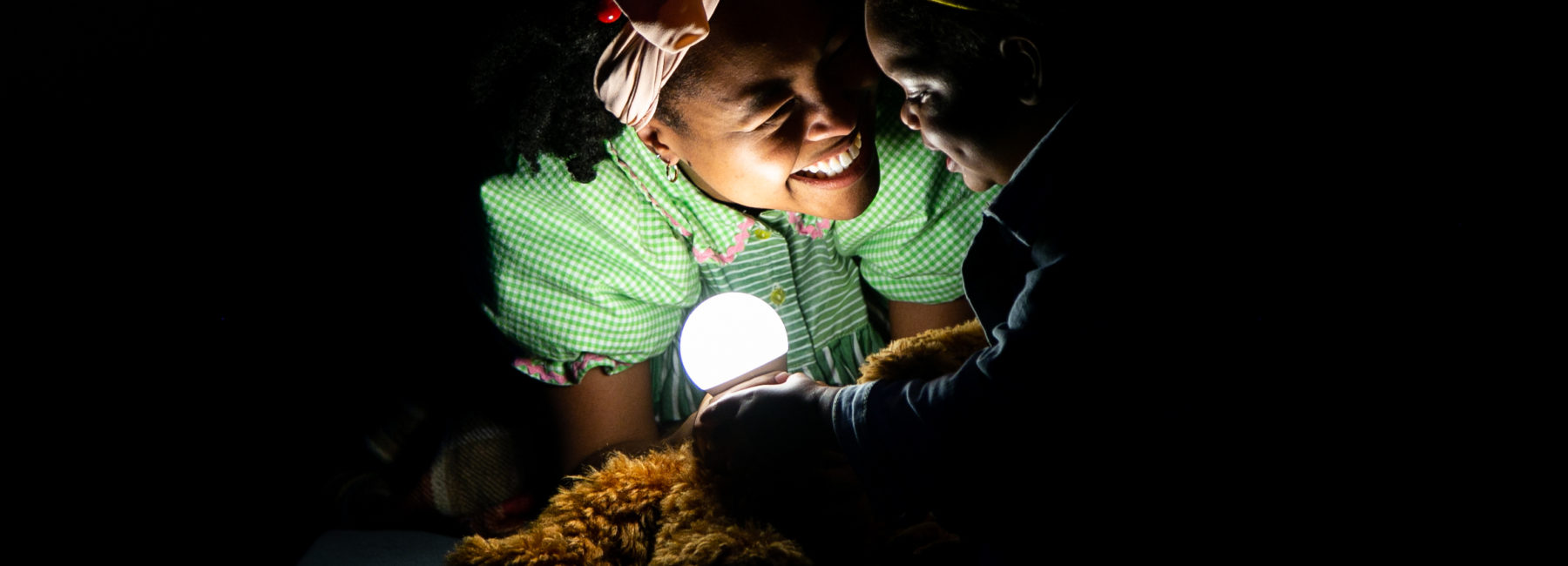In the last decade, conversations about equity have become increasingly prominent within the TYA field and our individual organizations. The impacts can be seen in hiring processes, season announcements, and educational programs. In education, many companies have not only updated policies, statements of inclusion, and source material but also created new offerings for their communities. The result has been the evolution of a niche: identity-centered theatre education spaces.
From Seattle Children’s Theatre’s affinity camps for LGBTQ+ and BIPOC students to Imagination Stage’s bilingual classes in Spanish, English, and American Sign Language, more and more programs are being developed to serve our young people through education in ways that celebrate them holistically. There has been such excitement and pride from organizations and colleagues promoting these programs as welcoming places for the intersection of personal identity, as there should be. However, when it comes to identity-centered programs for disabled young people, many companies have turned to euphemisms and deficit-focused approaches to support their marketing. This is especially prominent in programming geared towards autistic young people, those with sensory processing disorder, and others with sensory sensitivities and non-dominant communication styles.
As we instill with young writers in every playwriting class, the words we use are powerful. When it comes to marketing a class for a specific community, those words not only let that community know what we think about them but also inform the opinions of those outside that community. Because of how prominent ableist language and beliefs are in our society, it’s unsurprising that such language and beliefs are reflected in TYA programming, but that doesn’t make it acceptable.
"Because of how prominent ableist language and beliefs are in our society, it’s unsurprising that such language and beliefs are reflected in TYA programming, but that doesn’t make it acceptable."
“For most of our societal history, the language that has been used to describe those with disabilities has been dictated by those who don’t identify as being part of the community,” says Ben Raanan, Artistic Director of Phamaly Theatre Company, “Over the past 10 or so years, we have seen a societal shift as the disabled community have began a journey of self-advocacy and self-acceptance. Because of this, it is vital that Phamaly stay on the forefront of what it means to be a disabled theatre company and specifically the language surrounding how our community refers to themselves. This language can sometimes change so rapidly that it takes an active ear to stay on the forefront.”
Our language choices need to reflect the respect and compassion we intend to convey. When we rely solely on disability euphemisms to identify who a class is for, we further the stigma individuals and their families are already facing. Every time we turn to a euphemism such as “differently abled,” “special needs,” “exceptionalities,” and “handicapable,” we imply that disability isn’t something we should talk about or outright acknowledge. The fear that acknowledging the disability community by name would be offensive is just a reflection of personal ableism that hasn’t yet been addressed. (For more on disability euphemisms and additional ableist language, Lydia X. Z. Brown has an incredible resource on their website Autistic Hoya that details the origins of and alternatives for common ableist words and terms.)
There is, of course, nuance here. Not every child has access to getting a diagnosis, and not every family feels comfortable with disclosing. There are class, race, and gender biases that create barriers to diagnosis and an enormous amount of stigma around disability. Additionally, some caregivers use euphemisms because it’s what they’ve observed others doing or because they believe doing so can shield their child from the stigma and ableism that the disability community faces. Insinuating a need for disclosure because “[t]eachers can only accommodate students’ specific needs when they understand,” implies a right to information we are not owed and may not be available to the family while also further stigmatizing families and individuals who don’t yet feel equipped to self-advocate. It’s possible for us to let these families know how we are prepared to welcome and support their young people without further stigmatizing disability. Information on the supports available and modifications possible can be provided alongside an open offer to collaborate on with the family to determine how to best way to serve their young person based on what they feel would be helpful for us to know.
"It’s possible for us to let these families know how we are prepared to welcome and support their young people without further stigmatizing disability."
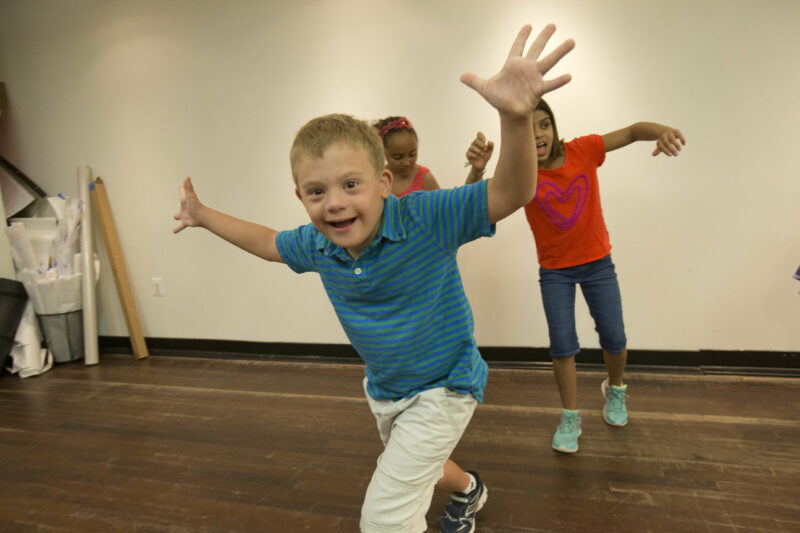
Photo Credit: Imagination Stage
For example, Imagination Stage offers both “inclusive” and “peer-group” classes. Inclusive meaning anyone is welcome to enroll in the class and peer-group meaning the class is designed for individuals with a specific lived experience.
“This distinction is important because we want to be clear that all children are welcome to all of our classes, and we strive for all students to benefit from classes in a way that matches their needs,” says Shanna Sorrells, Senior Manager of Access and Inclusion, “We do recognize that some students may prefer smaller classes where they can connect with others who also have disabilities or classes designed specifically for neurodiverse populations. […] I think all young people and their families should be equipped with the power to make the choices they need–after all, they know best their own needs and what benefits they are seeking from classes at Imagination Stage. We cannot presume to know what is best for every child–everyone is so unique and is following their own personal journey. We honor that.”
Imagination Stage is also explicit in naming which types of disabilities each class is for and what supports are provided.
“Disability is simply a part of who we are. If we use euphemisms instead, it teaches young people that their disability should be hidden and isn’t a facet of themselves that they can take pride in,” says Sorrells.
In addition to euphemisms, many TYA organizations have historically utilized a deficit-focused approach to market their disability-centric education programming. There are many models through which disability can be viewed, but self-advocates reject deficit-focused approaches because of the ways they perpetrate ableism and advance the narrative that disability is a problem of the individual. When we use this method to market our programs by detailing how “the benefits of theatre are incredibly compatible to the deficits of autism,” even with the intent wanting caregivers to understand how positive the experience could be for their young person, we support the notion that an opportunity must somehow balance out society’s perception of the negative parts of someone’s disability for it to be worthwhile for them—as if in order for disabled individuals to participation in theatre class to be worthwhile, they need to be gaining skills that can make them seem “less disabled.”
Despite the fact that identity-centered classes tend to be marketed as places to celebrate one’s identity and enjoy being in community with others who share that lived experience, TYA classes for disabled young people often lack this lens. Some have gone as far to highlight the ways in which the program will help mask the traits and limitations of the disability. When descriptions of programs promise to “address nonverbal communication focusing on recreating facial expressions and vocal inflections that indicate an emotion state,” we imply that there is a correct and incorrect way to communicate. Yet, we teach an art form that thrives on exploring our full spectrum of communication. Why use it to try to force young people to conform to ableist standards when it can easily be used to adapt and include all styles of communication? Disabled and non-disabled students deserve to know that sign language, Augmentative and Assistive Communication (AAC), monotone voices, stuttering, echolalia, and other communication methods and traits can all be efficient forms of communication, on stage and off.
How can TYA ensure we’re using language that empowers rather than harms the communities we seek to serve?
"In addition to euphemisms, many TYA organizations have historically utilized a deficit-focused approach to market their disability-centric education programming.... How can TYA ensure we’re using language that empowers rather than harms the communities we seek to serve?"
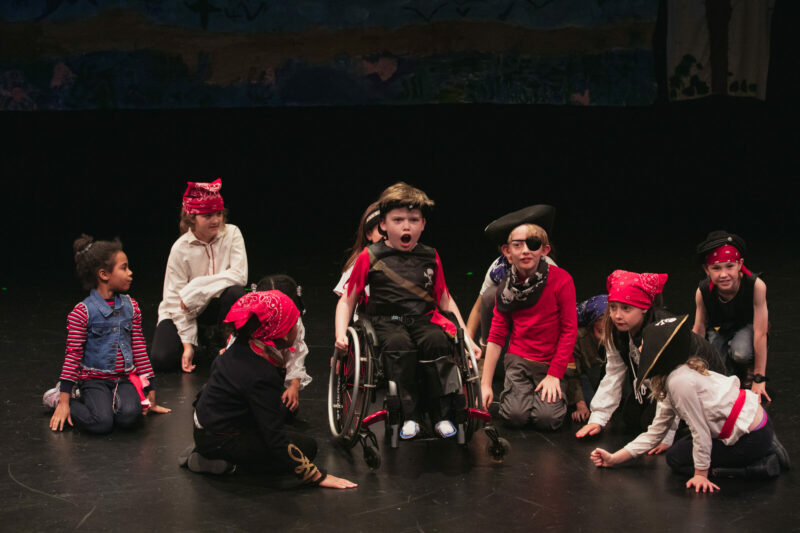
Photo Credit: Imagination Stage
“Talk to the community,” says Raanan, “So often, people will look for textbooks or articles or organizations which are disability-adjacent (written by a therapist, or a scholar) rather than go to someone with a disability first-hand and talk to them. This isn’t done with malice, but rather because historically, disability has always been viewed as a negative. Folks get nervous that if they bring up someone’s disability to them, they will be broaching a topic that is taboo. Instead, they talk around a subject or to talk to people who don’t have the disability in order to gain further knowledge which leads to misinformation.”
The disability community has long had the rallying cry of “nothing about us without us.” The decisions, initiatives, representation, and programming that are about us must involve us. An excellent example of this is the previously mentioned ASL-English bilingual class offered at Imagination Stage.
“After a long hiatus from our Deaf Access program, we are launching ASL/English bilingual You & Me classes with the goal of being able to eventually provide access to theatre education for Deaf* children of all ages. (*Deaf includes Deaf, DeafBlind, DeafDisabled, Hard of Hearing, and Late-Deafened.),” says Sorrells, who is also Deaf and fluent in ASL, “We have developed a partnership with Gallaudet University and National Theatre of the Deaf in effort to create a pipeline of Deaf theatre teaching artists. This provides us with a pool from which to hire, so Deaf children have access to theatre education from adults they can relate to and with whom they have communication access.”
Whether a TYA organization is looking to start a disability or neurodiversity-centered program or update their current programming to more closely align with the principles of disability justice, we can all remember that we are a field that thrives on creativity and there is not one right approach but there are many, many benefits.
“It is important to recognize that there is not a one-size-fits-all approach,” says Sorrells, “When we make spaces accessible, EVERYONE benefits. […] It is so important for disabled folks, especially young disabled people to have access to disability affinity spaces and disabled artistry because they see themselves reflected by others and have positive role modeling. When we don’t see ourselves reflected in the arts or in careers related to the arts, it becomes difficult to imagine ourselves in those spaces. It is also important for us to have equitable access to non-disabled spaces and artistry because we, too, have stories to share, and are a part of the fabric of humanity.”
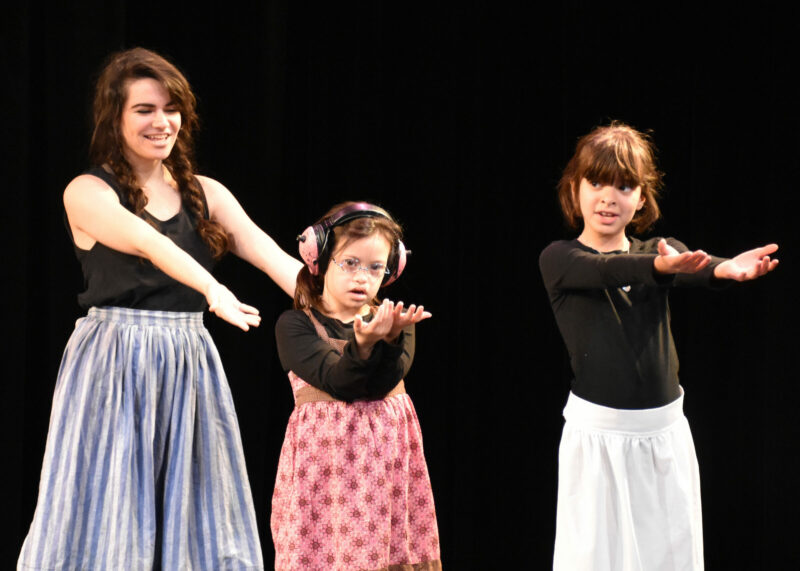
Photo Credit: Imagination Stage
Disabled representation and inclusion is scarce in theatre, and what little representation exists on stage is often harmful and rarely portrayed disabled actors. Because this scarcity begins with disability-affirming programming for young people, the field of TYA has both an opportunity and responsibility to create an accessible, affirming standard for disabled young people.
“Phamaly was created out of a deficit within the community,” says Raanan. “Most places weren’t able to see a world where they were able to provide an artistic home for those with disabilities and so we created our own…and Phamaly was born.”
“The idea that creating a theater which is fully accessible, inclusive, and also artistically rigorous is easy is a myth,” continues Raanan. “It’s very challenging. It’s also 10,000% artistically rewarding. When a company wants to plan, market and execute these programs, we ask them not to run when they are suddenly outside of their comfort zone…but rather continue to engage and reevaluate those existing mental models which are not working given these new programs. No one wants to be shut out, they want to work with these companies in order to create accessible programs. I always say…it’s our biggest dream that one day we will have to shut down Phamaly because all our actors are working all over the nation and there is no longer a specific need for a company that just focuses on disability.”
"...the field of TYA has both an opportunity and responsibility to create an accessible, affirming standard for disabled young people."
By explicitly describing who programs are designed to serve, outlining the supports available and devising specialized curriculum, and involving the disability community throughout our programming processes, TYA organizations can model affirmative, disability-centered practices not only for the disability and neurodivergent individuals we seek to serve but for everyone in our communities.

